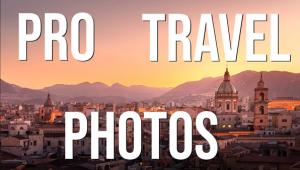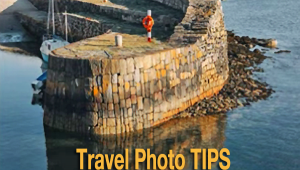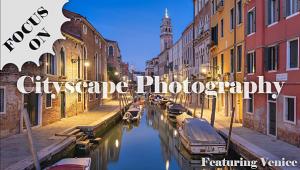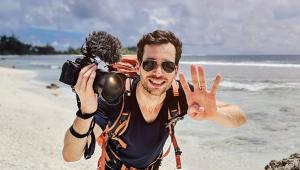Point & Shoot: Great Travel Photos
|
Taking pictures on vacation gives you visual souvenirs of your trip—memories you'll enjoy sharing with family and friends for a long time. When travelling, we experience new cultures and scenery, and tend to view everything with a sense of wonder and adventure. So bring lots of film (or take a large-capacity memory card if you're shooting digitally), and your compact camera to have on hand so you won't miss a thing.
Going on vacation gives you a rare opportunity to spend long periods of time with your family, friends or a loved one. So you'll have plenty of opportunities to photograph them in a wide array of activities like hiking, water sports, or touring a city. Whatever you do, try to find a setting in which to photograph people that will remind you of the experience long after you return home. Before you go on your trip, read as much as you can about where you'll be going. Go to your local library or bookstore to check out travel guides, and include the photography section, as many travel locales are the subjects of some beautiful coffee-table books. Log onto the Internet and check out sites for travel magazines that may have articles about your vacation destination in their archives. Call the office of tourism and find out if there are any special events planned while you will be visiting the area. The more you know about a location and its activities, the better you'll be able to decide what to photograph. When shooting pictures of active people, it's best to use a high-speed film (in the ISO 400-1600 range) and set your camera on its sports/action mode if it has one. Watch through the viewfinder for fleeting candid moments, and be prepared to shoot quickly. Try to shoot pictures of people enjoying themselves and the scenery, rather than standing stiffly, grinning at the camera. If you're concentrating your vacation shots on landscapes or scenery, you'll want to use a slower film (such as ISO 100-200) to get fine-grained images. Point-and-shoot cameras usually offer scenic shooting modes. It's also helpful if your camera has a built-in zoom ranging from wide-angle to moderate telephoto capabilities, to enable you to shoot a variety of subject matter. Take lots of pictures of your vacation locale, ranging from wide vistas to close details. Some point-and-shoot cameras (including some single-use models) incorporate a panoramic setting. Use it to photograph anything from spacious canyons to your entire travel group. And don't overlook vertical subjects: waterfalls and tall peaks make great panoramic shots. Most—if not all—of your summer vacation photo opportunities will probably be outdoors. With all the sun, water and sand you may encounter, it's imperative that you protect your camera. Be careful not to leave your camera and film in hot sunlight, or locked in an overheated car. Keep them in a cool place until you're ready to use them. If your travels take you to a spot that has a lot of sand, grit or water spray, it's a good idea to store your camera in a sealable plastic bag. And if you plan to wade in water or do any other water sport where your camera could get wet, consider a single-use, waterproof camera. Or check out a watertight housing for your compact camera. Think about telling a story with your vacation photos. If you enjoy creating photo albums—the traditional type or an online album—you may find it helpful to keep track of when and where you shot each picture. If your camera has a data-imprinting feature that can date-stamp your photos, use it for at least the first and last few shots on your roll to remind you later when you shot your pictures. Bon Voyage! |
- Log in or register to post comments






















































